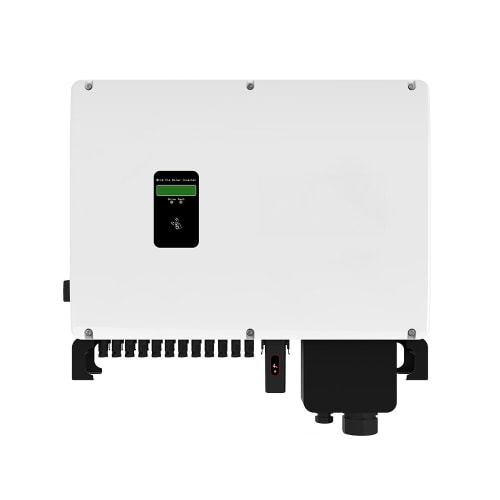NEWS
Welcome to My Blog!
Before we dive into the content, if you’re interested in our products or have any questions, please feel free to visit our Contact Us page on the website. Our team is ready to assist you with inquiries, orders, or any support you may need.
Now, let’s get started on our journey together. I hope you find the content here insightful, engaging, and valuable.
Table of Contents
Introduction

If you’ve been considering switching to solar energy, you’re probably wondering how solar panel kits work, what they include, and how to choose the right one for your home or business. Solar power is a sustainable and cost-effective way to reduce your electricity bills, minimize your environmental footprint, and enjoy energy independence.
However, understanding the components that make up a solar panel kit can be daunting. These kits come with all the necessary pieces to install a solar energy system, but they vary depending on the type, size, and your unique energy needs. This blog will guide you through everything you need to know about solar panel kits, including what each component does and how they work together to generate renewable energy.
What is a Solar Panel Kit?
A solar panel kit is a package that contains all the components required to install a solar power system. These kits typically come with everything you need for a basic setup, and they cater to various needs, from small off-grid power systems to large residential or commercial solar installations. Here’s a breakdown of the key components found in most solar panel kits:
- Solar Panels
- Inverter
- Mounting System
- Wiring and Connectors
- Charge Controller (Optional)
- Battery Storage (Optional)
Each part plays a crucial role in generating, converting, and storing solar energy.
Solar Panels – The Heart of the Solar Panel Kit

The solar panels are the core component of any solar panel kit. These panels contain photovoltaic (PV) cells that convert sunlight into electricity. Let’s break down how they work:
How Solar Panels Work:
- Photovoltaic Cells: The PV cells inside each solar panel convert sunlight into direct current (DC) electricity. This happens through the photovoltaic effect, where sunlight excites electrons within the semiconductor material, creating an electrical current.
- Efficiency: The efficiency of solar panels depends on several factors, including the quality of the materials used, the panel’s design, and how much sunlight it can absorb. Generally, monocrystalline panels are the most efficient, converting more sunlight into energy than polycrystalline panels.
- Energy Output: A solar panel kit can include panels with a variety of power outputs, from 100W (small appliances) to 400W+ (for larger systems).
Panel Materials:
- Monocrystalline Solar Panels: Made from a single continuous crystal structure, these panels are highly efficient and durable, though they tend to be more expensive.
- Polycrystalline Solar Panels: Made from multiple silicon crystals, these are less efficient but are generally cheaper.
- Thin-Film Solar Panels: These panels are flexible and lightweight, often used for commercial or off-grid applications, but they are less efficient than crystalline panels.
The Inverter – Converting DC to AC Power

The inverter is one of the most important components in a solar panel kit. Solar panels generate direct current (DC) electricity, but most household appliances require alternating current (AC). The inverter takes the DC power from the panels and converts it into AC power, which is what your home or business uses.
Types of Inverters:
- String Inverters: The most common type, they connect all panels in series, converting the combined DC output to AC.
- Microinverters: These are installed on each individual panel and convert the DC power from each panel separately. Microinverters offer better performance, especially in shaded areas, because they allow for more flexible panel layouts.
- Hybrid Inverters: These inverters can handle both the conversion from DC to AC and charge batteries if you have a storage system.
Mounting System – Securing Your Solar Panels
The mounting system is what physically secures your solar panels to the roof or the ground. A proper mounting system ensures that your solar panels are positioned to maximize sunlight exposure and remain stable during harsh weather conditions.
Types of Mounting Systems:
- Roof-Mounted: Most residential systems use roof-mounted brackets to secure the panels on top of the home. Roof mounts are typically the most cost-effective.
- Ground-Mounted: For larger systems or areas where roof space is limited, ground mounts are used. These offer flexibility for optimal panel positioning and are easier to maintain.
- Pole-Mounted: This system allows the panels to be mounted on a pole, offering better height adjustment for shading and weather.
Wiring and Connectors – The Power Highway
Wires and connectors are the backbone of your solar power system. They allow the electricity generated by the panels to be safely transmitted to the inverter, charge controller, or battery storage system.
Key Considerations for Wiring and Connectors:
- Wire Size: The gauge (thickness) of the wire affects how efficiently electricity flows through it. For solar systems, it’s important to use wires that are designed for high voltage and high current to avoid power losses.
- Connectors: MC4 connectors are the standard in the solar industry. These quick-connect connectors are used to link the panels and make the system safe and easy to set up.
Charge Controller (Optional) – Protecting Your Battery
If your solar panel kit includes a battery storage system, a charge controller is essential. It regulates the charging process to ensure the battery doesn’t get overcharged, which can significantly extend the life of your battery.
How Charge Controllers Work:
- PWM (Pulse Width Modulation) Controllers: These controllers are the more affordable option. They work by periodically switching the charging circuit on and off.
- MPPT (Maximum Power Point Tracking) Controllers: More advanced and efficient, MPPT controllers continuously track the optimal power output for your system, ensuring maximum energy generation.
Battery Storage – Energy for Later

Battery storage systems allow you to store excess electricity for later use, such as during the night or on cloudy days. If you’re using a solar panel kit to go off-grid, batteries are essential for storing energy.
Types of Solar Batteries:
- Lithium-Ion Batteries: Lightweight, high-energy-density batteries that are commonly used in residential solar storage.
- Lead-Acid Batteries: These are cheaper but heavier and less efficient. They are typically used in larger, more industrial-scale solar systems.
How Much Power Can a Solar Panel Kit Generate?
The amount of electricity generated by a solar panel kit depends on its wattage (W). The higher the wattage, the more energy it produces. Here’s a guide to understanding how different wattages of solar panel kits work:
| Wattage | Potential Use |
|---|---|
| 100W – 400W | Small appliances, battery charging, RVs, boats |
| 1kW – 3kW | Essential household appliances (fridge, lights) |
| 5kW – 10kW | Large homes, commercial spaces, full electrical needs |
| Above 10kW | Larger businesses, farms, off-grid power setups |
What Can You Power with a Solar Panel Kit?
- 100W to 400W Solar Panel Kit: Think of this as your compact power solution. You can run small appliances like lights, fans, or even charge batteries. It’s also great for RVs or small cabins.
- 1kW to 3kW Solar Panel Kit: Ideal for homes with moderate energy needs, this size can power appliances like refrigerators, water heaters, or multiple lights. It’s great for reducing your electricity bill.
- 5kW to 10kW Solar Panel Kit: For larger homes or small businesses, this kit can cover all your energy needs, including high-power appliances like air conditioning, washing machines, and more.
Choosing the Right Size Solar Panel Kit
When it comes to selecting the right solar panel kit, size matters. But how do you choose? Consider these factors:
- Energy Consumption: Check your electricity bill to determine how much energy you use monthly. A 2kW to 5kW system is typically enough for average-sized homes, while a 5kW to 10kW system is better for larger homes or businesses.
- Roof Space: The size of your roof can limit the number of panels you can install. If space is tight, consider high-efficiency panels that produce more energy per square foot.
- Efficiency of the Panels: The higher the efficiency, the more power you can get from fewer panels. Monocrystalline panels are more efficient than polycrystalline panels, so you can generate more power in less space.
Benefits of Solar Panel Kits
There are numerous reasons to choose solar panel kits. Here’s why they’re a great choice:
- Cost-Effective: Solar kits are typically cheaper than hiring a professional installer to set up an entire system. They’re designed to be affordable and easy to install, saving you money on installation costs.
- Environmentally Friendly: Solar power is a green energy source, meaning it’s great for reducing your carbon footprint. With a solar panel kit, you’re contributing to a cleaner, more sustainable future.
- Easy to Install: Many kits come with step-by-step instructions, making them perfect for DIY enthusiasts. You can install the system on your own, saving on labor costs.
- Energy Independence: Once your system is set up, you’re less reliant on the grid. This is particularly useful if you live in an area with unreliable power or if you want to live off the grid.
Conclusion
Solar panel kits are the perfect starting point for anyone looking to switch to solar energy. Whether you’re looking to reduce your electricity bill, live off the grid, or contribute to environmental sustainability, these kits provide an easy and cost-effective solution. By understanding how solar panel kits work, the components they include, and how to choose the right size for your needs, you’ll be ready to make an informed decision.
With more people turning to solar energy, now is the perfect time to invest in a solar panel kit for your home or business. With all the benefits that come with using solar power—cost savings, energy independence, and eco-friendliness—it’s clear that solar panel kits are a smart choice for the future.
FAQ
What’s included in a solar panel kit?
A typical solar panel kit includes solar panels, an inverter, mounting hardware, wiring, and sometimes battery storage or charge controllers.
How much does a solar panel kit cost?
A small kit (100W-400W) can cost anywhere from $100 to $300, while a larger kit (5kW or more) can cost between $3,000 and $10,000, depending on the size and brand.
Can I install a solar panel kit myself?
Yes, many solar panel kits are designed for DIY installation. However, some larger systems or those that require grid connection might need professional help.

